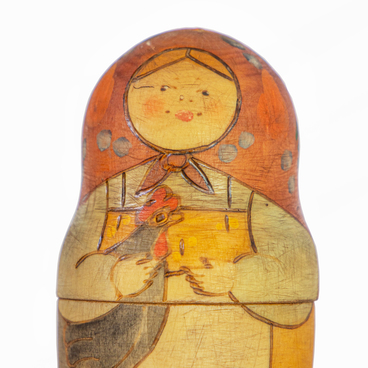2.5 kilometers to the east of the Trinity Lavra of St. Sergius is the area that used to be called Korbukha. The pond divided Korbukha into two sides — the one closest to the Lavra and the one far away. The first mention of these possessions is found in the description of the monastery in the middle of the 17th century — it mentions the watchmen who guarded the ponds on Korbukha.
In the early 1740s, Kirill Florinsky, the Archimandrite of the Trinity Monastery, initiated the development of the near Korbukha. After getting his education in Kharkov, he went abroad to study. It was there that Florinsky saw beautiful parks, including the famous Versailles, and decided to create a similar one on Korbukha.
In 1759, work began on the far Korbukha. At that time, Gideon Krinovsky, the preacher of the court of Elizaveta Petrovna was the abbot of the monastery. There were legends that he wore diamond buckles on his shoes, and while steaming in the bath, he poured Tokay wine on the stove. “It is natural to assume that a person who moved in the court circles, who saw the luxury of Peterhof and Tsarskoye Selo, naturally tried to create something beautiful that meets the requirements of his era, ” Alexey Svirin wrote in the book “Korbukha”, which was published in 1925.
The decoration of the estate was completed under Metropolitan Platon of Moscow (Levshin). Researchers call him an “undeniable aesthete.” He lived in St. Petersburg for a long time and saw the luxury of the imperial palaces. Alexey Svirin believed that the instructions of these monastic administrators “may have unconsciously reflected the influence of the imperial residences, so that Korbukha can be considered as their reflection.”
On both banks of the pond in the second half of the 18th century there were two ceremonial two-storey houses, around which regular gardens were laid out. Next to the mansions there was a bathhouse, a stable, greenhouses; at the bottom of the pond there were gazebos and a gallery.
Korbukha was intended for the recreation of the Lavra administration, but the royalty also visited it. For some time, Korbukha was considered an entertainment place of Empresses Elizaveta Petrovna and Catherine II.
At the beginning of the 19th century, Korbukha fell into disrepair. The Gethsemane hermitage, the monks' cells, were built out on the far side in 1843.
The model of the Korbukha presented in the exhibition was made by the architect Dmitriy Sukhov according to the drawing of the 18th century.
In the early 1740s, Kirill Florinsky, the Archimandrite of the Trinity Monastery, initiated the development of the near Korbukha. After getting his education in Kharkov, he went abroad to study. It was there that Florinsky saw beautiful parks, including the famous Versailles, and decided to create a similar one on Korbukha.
In 1759, work began on the far Korbukha. At that time, Gideon Krinovsky, the preacher of the court of Elizaveta Petrovna was the abbot of the monastery. There were legends that he wore diamond buckles on his shoes, and while steaming in the bath, he poured Tokay wine on the stove. “It is natural to assume that a person who moved in the court circles, who saw the luxury of Peterhof and Tsarskoye Selo, naturally tried to create something beautiful that meets the requirements of his era, ” Alexey Svirin wrote in the book “Korbukha”, which was published in 1925.
The decoration of the estate was completed under Metropolitan Platon of Moscow (Levshin). Researchers call him an “undeniable aesthete.” He lived in St. Petersburg for a long time and saw the luxury of the imperial palaces. Alexey Svirin believed that the instructions of these monastic administrators “may have unconsciously reflected the influence of the imperial residences, so that Korbukha can be considered as their reflection.”
On both banks of the pond in the second half of the 18th century there were two ceremonial two-storey houses, around which regular gardens were laid out. Next to the mansions there was a bathhouse, a stable, greenhouses; at the bottom of the pond there were gazebos and a gallery.
Korbukha was intended for the recreation of the Lavra administration, but the royalty also visited it. For some time, Korbukha was considered an entertainment place of Empresses Elizaveta Petrovna and Catherine II.
At the beginning of the 19th century, Korbukha fell into disrepair. The Gethsemane hermitage, the monks' cells, were built out on the far side in 1843.
The model of the Korbukha presented in the exhibition was made by the architect Dmitriy Sukhov according to the drawing of the 18th century.



